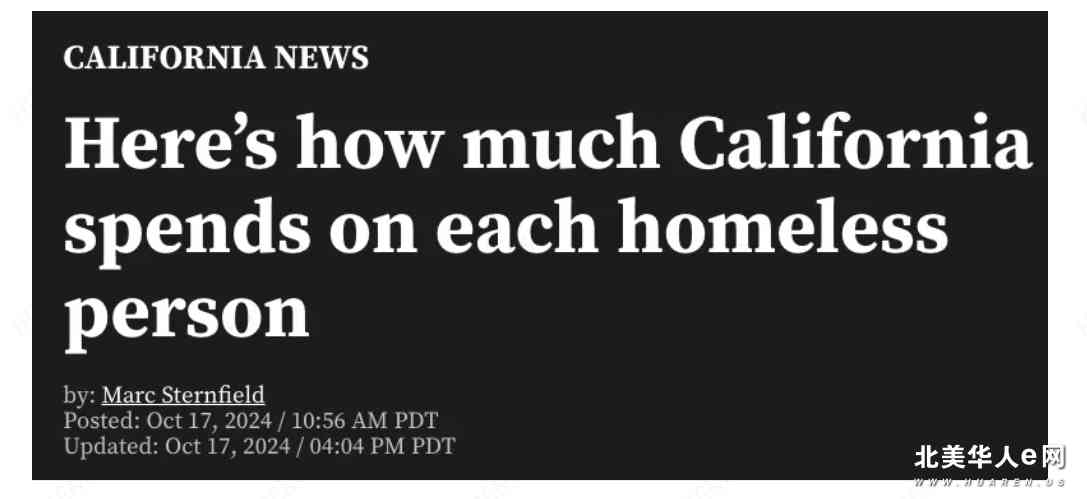Here’s how much California spends on each homeless person
A state audit found that California invested a staggering $24 billion over the past five fiscal years to address homelessness, a figure that underscores the state’s urgent effort to curb this intractable crisis.
Yet, as this spending has increased, so has California’s homeless population.
According to the U.S. Department of Housing and Urban Development, an estimated 181,000 people experienced homelessness in California in 2023 — an increase of 63,000 over the past ten years.
In the 2021-22 fiscal year, when the homeless population was estimated to be 172,000, California spent $7.2 billion, which equated to nearly $42,000 per homeless individual.
The spending includes housing and rental assistance, physical and mental health outreach, case management, and funds to purchase motels and other types of temporary housing.

An estimated 181,000 people experienced homelessness in California in 2023, according to the U.S. Department of Housing and Urban Development – an increase of 63,000 over the past ten years. (California State Auditor)
So, is this money well-spent? Many politicians and policy experts, including Governor Newsom, have doubts.
In 2022, Newsom threatened to withhold $1 billion in funds from cities and counties, criticizing their homelessness plans as inadequate. This summer, he directed local governments to clear encampments or risk losing out on state funding next year.
“I want to see results,” Newsom told reporters at a media event in Los Angeles. “I don’t want to read about them. I don’t want to see the data. I want to see it.”
In a scathing report released in April, the state auditor said the California Interagency Council on Homelessness (Cal IHC) has done a poor job accounting for homeless spending and tracking results.
“Cal ICH has also not aligned its action plan to end homelessness with its statutory goals to collect financial information and ensure accountability and results,” the Auditor’s office said. “We believe that the State’s policymakers and the public need up‑to‑date information to evaluate the efficacy and effectiveness of billions of dollars in state spending.”

City sanitation workers clear an encampment as workers help bring unhoused people to interim housing, as part of an ‘Inside ...

Governor Gavin Newsom along with Caltrans clean up an encampment site near Paxton Street and Remick Avenue in Los Angeles as the state’s Clean California initiative continues on Thursday, Aug. 8, 2024 in Los Angeles, CA. (Jason Armond / Los Angeles Times via Getty Images)

A homeless person stands next to an encampment in Skid Row, downtown Los Angeles, California, on July 26, 2024. (Photo by ...
L.A. Mayor Karen Bass declared homelessness a state of emergency and launched her $250 million Inside Safe program on her first day in office in December 2022. The initiative directs tens of millions of dollars annually toward programs that transition homeless individuals into temporary and eventually permanent housing.
Bass has touted isolated success stories of removing encampments from the streets in areas including downtown L.A. and Hollywood. She expanded a directive to use publicly owned land to build more housing faster and remove RV encampments.
A city website that tracks results says “more than 21,000 people” have been moved indoors since December 2022, and more than 5,000 have found permanent housing.
As with statewide homeless programs and grants, however, critics question if the money is truly producing results.
“Angelenos, unfortunately, are paying four times from their taxes at the federal level … to the state level, to the county level and city [on homelessness], L.A. City Councilwoman Monica Rodriguez recently told KTLA 5 News. “We have to have an honest conversation about which areas are failing to produce the results for their constituencies. No one is trying to point fingers. We all represent the same people, and we have an obligation to make sure that we solve this crisis.”
Serving ramen to the homeless isn’t good enough, L.A. city controller says In a wide-ranging survey on the issue, researchers at the University of California San Francisco interviewed nearly 3,200 unhoused individuals to learn how they ended up on the streets.
Around 19% said they had become homeless after incarceration in prison or a prolonged jail stay, 49% from a housing situation where they didn’t have their name on a lease or mortgage, and 32% from a housing situation where they had their name on a lease or mortgage.
In the six months before becoming homeless, their median household income was just $960 per month, the UCSF researchers found.
https://ktla.com/news/california/heres-how-much-california-spends-on-each-homeless-person/#:~:text=In%20the%202021%2D22%20fiscal,nearly%20%2442%2C000%20per%20homeless%20individual.
 KTLA报道标题
KTLA报道标题  KTLA报道标题
KTLA报道标题 
 City sanitation workers clear an encampment as workers help bring unhoused people to interim housing, as part of an ‘Inside ...
City sanitation workers clear an encampment as workers help bring unhoused people to interim housing, as part of an ‘Inside ...  Governor Gavin Newsom along with Caltrans clean up an encampment site near Paxton Street and Remick Avenue in Los Angeles as the state’s Clean California initiative continues on Thursday, Aug. 8, 2024 in Los Angeles, CA. (Jason Armond / Los Angeles Times via Getty Images)
Governor Gavin Newsom along with Caltrans clean up an encampment site near Paxton Street and Remick Avenue in Los Angeles as the state’s Clean California initiative continues on Thursday, Aug. 8, 2024 in Los Angeles, CA. (Jason Armond / Los Angeles Times via Getty Images)  A homeless person stands next to an encampment in Skid Row, downtown Los Angeles, California, on July 26, 2024. (Photo by ...
A homeless person stands next to an encampment in Skid Row, downtown Los Angeles, California, on July 26, 2024. (Photo by ... 
